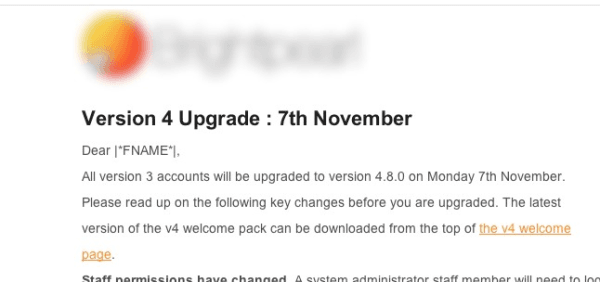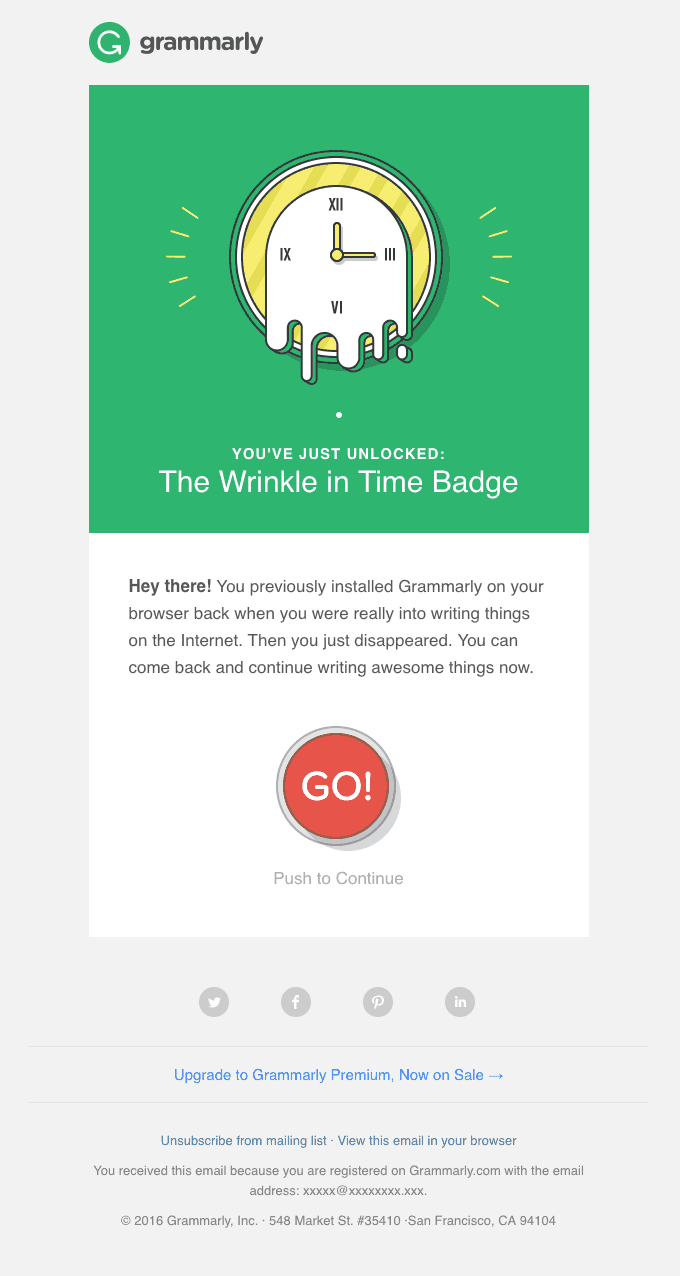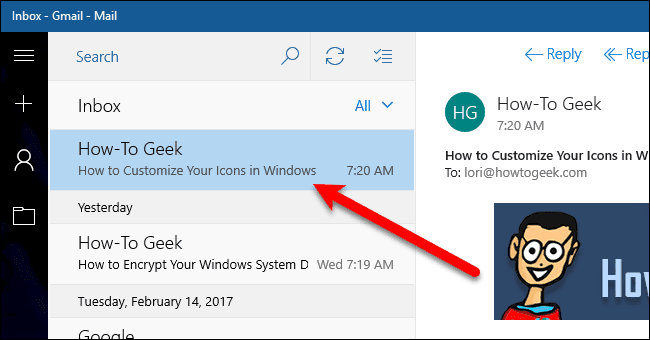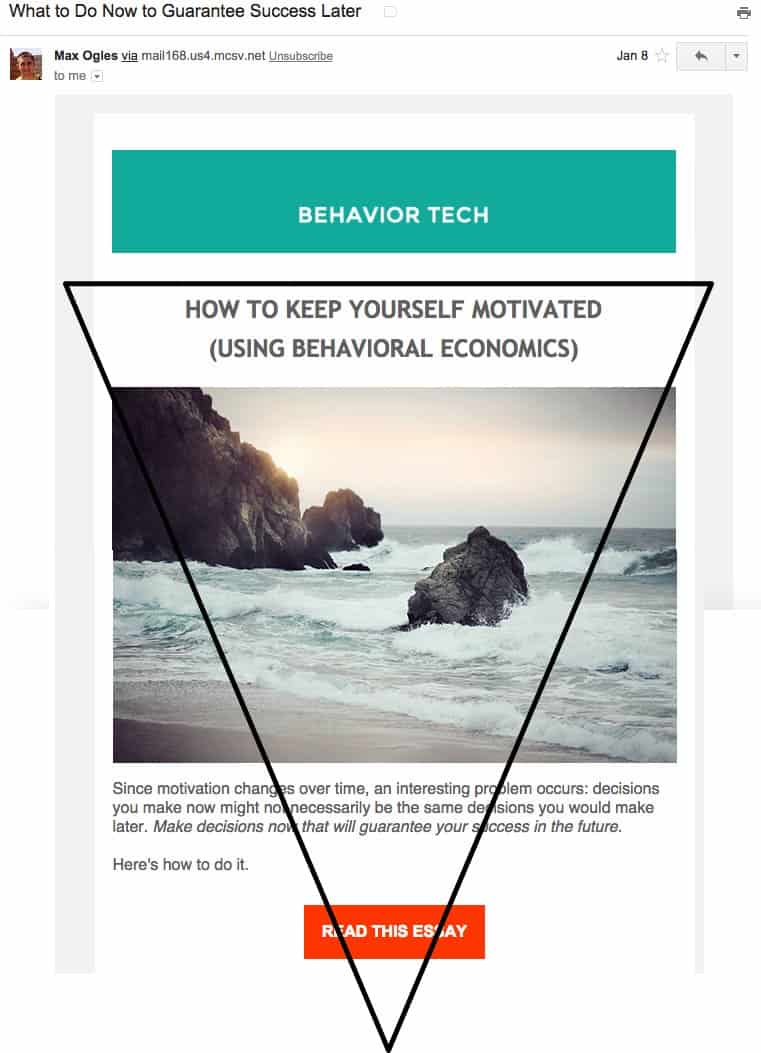In the face of a seemingly endless stream of new marketing techniques, email marketing has stood the test of time. When it’s good, email has the power to capture your customer’s attention and encourage them to take action. When it’s bad, well…we’ve all been on the receiving end of these baby’s.

Read on as we take a look at some of the best ways you can craft your email marketing copy to get results.
Figure Out the Formula
When crafting copy for emails, there is no shortage of formulas to borrow from. While it’s a good idea to have a play around to figure out which formula/s suit your brand and work with your audience, the key here is to stick with what works after exploring and testing for results.
Here are some of the most popular copywriting formulas that will fit your email marketing strategy like a glove.
AIDA formula
An oldie but definitely a goodie, AIDA is a framework for all sorts of marketing copywriting that has a super dedicated following. Standing for attention, interest, desire, action, AIDA attempts to guide the reader down a funnel, ultimately convincing them to take whatever action is asked of them. Here’s how it works for email marketing.
Attention
This goes without saying, but first up, you want to grab your audience’s attention. In email marketing, you’re going to do that with a punchy subject line and message preview (more on those later).
Although powerful, these two components are not the be all and end all of getting your audience’s attention, other factors like the sender name and email address, time of day you are sending the email and frequency of other communications also affect your ability to capture the recipient’s attention.
Interest
So you’ve got the recipient to stop scrolling and open your email. Now what? Capturing your audience’s attention is one thing, but maintaining their interest and keeping them engaged is another beast entirely.
Assuming you are using a typical email format, use your introduction to address a problem or need among your audience through the power of storytelling. Remember, your word count is limited so you’ll want to be concise.
Desire
Creating desire is a crucial step in encouraging your customers to buy. In a traditional email template, this can be best achieved with imagery highlighting how your brand can satisfy the need or desire your customer has. This is your time to show off who you are and what you do best!
Action
Now that you’ve got your audience on the hook you need to make it easy for them to take action. To ensure you aren’t overcomplicating things and diluting your messaging, stick to one strong CTA (call to action) that makes it clear the action you want your audience to take.
The Four C’s
Standing for clear, concise, compelling and credible, the four c’s approach to copywriting is particularly effective in email marketing as it encourages the writer to keep it short and sharp. We’re talking four sentences or less. If you’ve got one succinct message that you really need to get across, this is a great way to do it.

Open Loops
Open loops are the cliffhangers of the marketing world. You can chalk it up to basic psychology, but once humans have been teased with something compelling, they need to know more.
Many businesses utilize the open loop in the subject line of their emails to attract their audience’s attention and really get them on the hook. But there’s nothing to say you can’t continue the suspense throughout the body of the email to encourage your customers to click through for the answer.
A word of warning: less is more with the open loop so it’s best to use these sparingly or you may risk alienating your audience. The very nature of this strategy also means it can verge on clickbait which should be avoided at all costs.

Now you’ve got your formula under control, let’s dive into the structure of your email campaigns.
Subject Line – Get Their Attention
First thing’s first, a killer subject line can make or break your email campaigns. This little 41 character blip is all that stands between your customers clicking through and discovering your amazing content, or sending it straight to the trash. In addition to ensuring your headline is the optimal length, here are a few more ways you can upgrade that subject line to help get your emails read!

Personalization
Adding a personal element to your subject lines like a name or location has been proven time and time again to help boost open rates. Including a name is just the beginning of many ways you can personalize your subject lines. Try posing a simple question etc. to pique your customers’ interest and get them to click through.
Incite FOMO
Fear of missing out – a millennials worst nightmare, and also an important tool in your email marketing arsenal. The simple act of creating a sense of urgency by alluding to a limited supply or limited time offer is a great way to capture interest and boost click-through rates.
Use Humour
People love jokes, there are no surprises there. One of the most tried and true ways to boost your open rates are to inject a little humour into your email subject lines. But tread carefully, this strategy can be a minefield and it’s where your knowledge of your customer really comes in. In general, it’s best to err on the side of caution rather than use a joke that risks alienating your database. It goes without saying, but unless you have a particularly chill customer-base, jokes about politics, religion and the like are probably out.
Message Preview – Convince them to Open
The message preview or pre-header is the line or two of text that falls underneath the sender and the subject line, usually giving a short description of the content contained inside the email. As email providers continue to evolve, the message preview has become just as crucial to the success of your campaigns as the subject line.

Why should I bother with a message preview?
Not only does this snippet of text help convince your database to read your emails, but it also provides context on what they are about to view. From the reader’s perspective, the name of the sender, subject line and message preview should flow together to provide a clear picture of what’s inside the email while making someone want to open it!
Think about the number of emails you receive where the message preview has been neglected, leaving your first impression of the email to be some generic instructions on how to view the email in your browser. Not only does it give the impression that the sender is a bit of an email novice, but it’s also a huge missed opportunity to communicate your message and boost open rates.
How long should it be?
The message preview length varies by device e.g. on iPhone, the Mail app will display 34 characters (60 if the phone is held in portrait view) whereas Gmail on a computer can display anywhere up to 110 characters.
While you could do a deep dive into the behaviour of your customers and use data on their email and device preferences to help you craft the best message previews, it’s generally best practice to position the most important information at the beginning of the text where it will display on all devices.
What do I write?
This is where you can get a little creative and experiment to find out what works with your database. As in the subject line, you shouldn’t be afraid to experiment with different character counts and inclusion of emoji’s to capture interest. There are however a few main things you want to include.
Concise summary
The main goal of the message preview is to summarize what lies inside the email. You should aim to use this space to convey the reason for the email, as well as highlighting any offers or special news that’s inside.
Call to action
Your email should include a call to action in it somewhere. By including your CTA in the message preview, you will increase the likelihood that your customers will click through and take action (especially if it’s something exciting!)
Things to avoid
Just as the preview can be a great tool to help your emails stand out in an inbox, it can also ruin the chances of your email being opened. Here are a few things to avoid to help boost your open rate.
Showing options to unsubscribe or view online
If you choose not to write a preview, this text is often shown by default. As well as being a huge missed opportunity to communicate with your audience, this text can give the impression that there is an error with the email and discourage your database from opening it.
Repeat the subject line
A common mistake amongst email marketing rookies. When getting ready to send a campaign, it can be overwhelming filling all the fields if you don’t understand what belongs in each area. Slow down, do your research and use this line to reach your audience.
The Body
So you’ve written a killer subject line and message preview and your audience have clicked through, the battle is half won. Read on as we impart some wisdom on the best ways to craft the body of your emails to encourage your audience to act.
Structure for “Skimmers”
These days, even when you do manage to get your audience to click through to your email, you have a small window to grab their attention. When you know most readers will be skimming your email for highlights and main points, rather than trying to fight it, work with them and structure your email to jump out at this sort of reader.
One popular way of doing this is the “inverted pyramid” formula. Starting with a strong heading at the top, make use of a compelling graphic before or after the introduction before gradually reducing the amount of information so all that’s left at the bottom of the email is one strong CTA. Check out the example to use as a guide.

Sandwich Your Important Info
If you’ve got an important message to communicate, do it at either the beginning or end of the email. While you may have crafted some mighty compelling copy, research shows up to 80% of people aren’t thoroughly reading it. Use this trend to your advantage and ensure your message is getting through by placing your key messaging at the start of your email, then repeating it at the end. Consider adding a ‘p.s.’ line to really draw your reader’s eye!
The bottom line
We know, we know. Information overload, right? Well, the good news is, no one knows what’s going to work for your customers better than you.
The important thing to remember here is to stay true to your brand and ensure your email marketing is in line with the rest of your messaging. By doing this and incorporating the email marketing copy techniques we’ve mentioned above into your email marketing strategy, you will set your business up with the best chance of creating emails that convert and turn those leads into sales.

